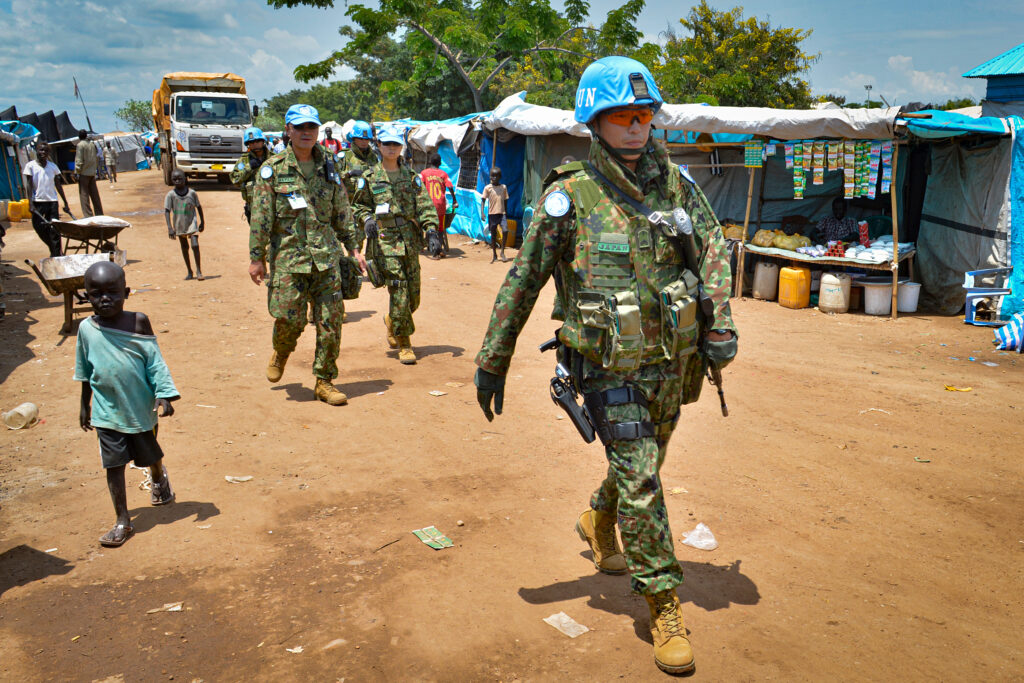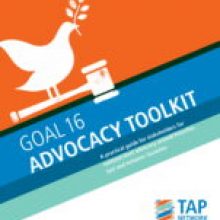Analyzing the SDG16+ landscape:
A gap analysis
A ‘gap analysis’ is an examination and assessment of the current landscape – including the key stakeholders, policies, plans, laws, practices and resources – for the purpose of identifying the differences between the current state of affairs and where you would like them to be. In the case of SDG16+, a gap analysis examines a country’s current level of commitment and performance in relation to SDG16+ implementation and accountability. In preparing for engagement with SDG16+, you may find it useful to undertake an initial gap analysis in order to determine who is doing what, what should be done and what resources are needed to advance peace, justice and inclusion.
The process of undertaking a gap analysis can help you to identify the most strategic and effective entry points for engagement in SDG16+ advocacy, implementation and accountability or follow-up and review. It can help you to understand which SDG16+ targets are (or are not) being addressed, whether government and non-government stakeholders are working to address gaps, and what further action and resources may be needed. In addition to being a valuable tool to guide civil society action on SDG16+, a gap analysis can also be a useful resource for governments who may be stretched to capacity in implementing the SDGs. Sharing your gap analysis on SDG16+ with your government, including practical recommendations for action, can be of enormous help to them and can open the door for constructive and positive engagement with government actors going forward.

There are many ways of undertaking a gap analysis on SDG16+ and no particular methodology or reporting format needs to be followed. Depending on the focus of your organization, a gap analysis can focus on all of the SDG16+ targets, a smaller group of targets or a specific SDG16+ target or issue. Similarly, you may wish to undertake a gap analysis on SDG16+ as an individual organization, in collaboration with other non-governmental stakeholders or in partnership with government actors.
In carrying out a gap analysis on SDG16+, you should consider the national reports and recommendations from international review mechanisms that address specific SDG16+ issues. For example, the Universal Periodic Review (UPR), the UN Convention on the Rights of the Child (CRC), the UN Convention on the Elimination of All Forms of Discrimination against Women (CEDAW), the UN Convention against Transnational Organized Crime (UNTOC) and the UN Convention against Corruption (UNCAC) all have review processes that provide information on the current state of implementation, gaps, challenges and the actions that are needed to make progress on SDG16+ issues such as violence against children, gender equality, organized crime and corruption.
The following page provides a template for undertaking a gap analysis in relation to SDG16+.
Goal 16 Advocacy Toolkit: A practical guide for stakeholders for national-level advocacy around Peaceful, Just and Inclusive Societies (TAP Network, 2016)
This toolkit provides civil society and other non-governmental stakeholders with guidance on how to engage with their governments and other local, regional or international stakeholders to support the planning, implementation, follow-up and accountability of SDG 16. It includes a short section on preparing a gap analysis. Available at:

Transparency, Accountability &
Participation (TAP) Network
Address: 205 E 42nd St.
New York, NY 10017
Email:
[email protected]